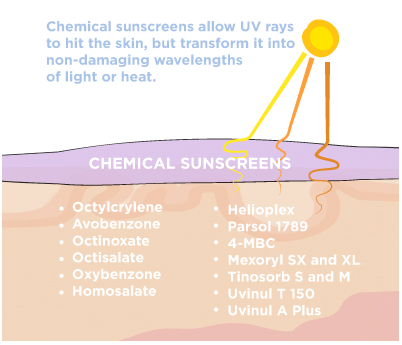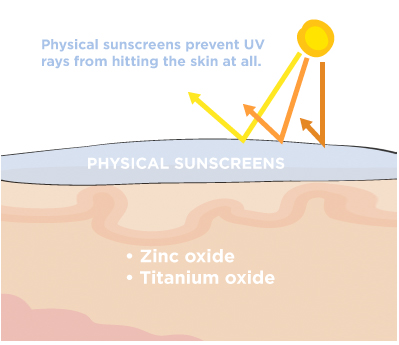It’s officially spring now. The weather is only going to get warmer and the sun is going to shine more intensely. Even though you should be wearing sunscreen all year round, I think most of us don’t take sun protection seriously in the winter (I’m definitely guilty of this). Now that the sun is out, we have to get serious about protecting our skin and wear sunscreen more rigidly.
I have to be honest, I don’t like wearing sunscreen at all. I just feel like wearing sunscreen is yet another layer I have to apply on my skin. Also, there’s a lot that can go wrong in sunscreen formulations. Sunscreens can leave a white cast, they can clog pores, they can make you look greasy, and most of all, you have to keep reapplying them during the day to keep your skin protected. Who actually does that? Who keeps reapplying sunscreen on their face throughout the day?! There’s just so much fuss that goes into wearing sunscreen that I just skip it and don’t give it any mind. I know that’s wrong and I should pay it more attention, because I know the damage that sunrays can do to skin. So I decided to give sunscreens a second look and stop hating them. I researched sunscreens and tried to understand how the work and how they’re formulated to help me find the best sunscreen for my skin. I actually found a lot of useful information that I think you would find interesting as well.
In this post I’m going discuss the 2 basic types of sunscreen. There’s physical and chemical sunscreens. I will tell you what these are, how they work, their pros and their cons, who they’re best suited for, etc. So you can make more educated sunscreen purchases for your skin type. This way you won’t be disappointed in your sunscreens like I always did.
First let’s start with what sunscreens are and what they’re supposed to do, so we can judge them based on that.
Sunscreens have 1 main goal: to protect skin against UV rays. Some sunscreens also contain added beneficial treatments, such as vitamins and peptides, etc. But their #1 goal is to protect against sun rays.
So why is it important that we keep our skin protected from sun rays?
A small portion of the sun’s rays falls in the UV (ultra violet) range. UV rays create free radicals, which are unstable molecules that break down collagen in the skin. Over time, the damage UV exposure and free radicals cause to the collagen of skin will lead to premature aging. Obviously we all want to avoid premature aging, but the most concerning issue with UV rays is that they are linked to skin cancer and long-term health issues. So protecting your skin is not only a matter of vanity, but also health.
There are 2 types of UV rays that cause harm to the skin: UVA and UVB rays.
The effects of UVB rays are quickly visible and you can feel them: UVB rays cause tanning and are responsible for skin burns.
UVA rays are more insidious. They penetrate the skin and slowly destroy the skin’s building blocks from the inside, causing irreversible skin damage over a longer period of time. It may take years before you start noticing the damaging effects of UVA rays.
There’s a lot more to tell about the different types of UV rays, but that’s beyond the scope of today’s post. Now let’s get into the sunscreens.
Chemical Sunscreens
Chemical sunscreens absorb UV radiation, preventing them from penetrating the skin. The UV filters used in chemical sunscreens create a chemical reaction that transforms UV rays into heat and then releases that heat from the skin.
Common chemical UV filters
Most chemical UV filters protect either against UVA or UVB rays, but some protect against both. Some chemical UV filters are not stable when exposed to sun. This means that in direct sun they lose their structure and stop working. These filters are often stabilized when formulated in conjunction with other UV filters.
- Para-aminobenzic acid (PABA) protects skin from UVB rays. This UV filter is less common in newer sunscreen formulations because it can be irritating on sensitive skin.
- Avobenzone has the best UVA protection of all chemical UV filters, but is notoriously unstable.
- Octisalate is usually added to help stabilize Avobenzone.
- Homosalate is a concerning one. Homosalate has been found in mother’s milk and it’s said to disrupt hormone levels. There is also concern that it releases harmful by-products as it breaks down.
- Octinoxate (aka Octylmethoxycinnamate) has also been found in mother’s milk and mimics hormonal activity, which may cause disruptions.
- Oxybenzone also mimics hormones and has high rates of allergic reactions.

Chemical Sunscreen Pros
- The texture is thinner and runny, more suitable for daily use and under makeup.
- The formula is easier to add additional treatments to, such as peptides and enzymes, which offer other skin benefits.
- Colorless, doesn’t leave a white cast.
- Offers more UVA protection than physical sunscreens.
Chemical Sunscreen Cons
- Can increase the internal skin temperature. This makes them less suitable for those with heat-activated skin (redness and rosacea).
- Does not work immediately after application. Requires a 20 minutes waiting time before it starts to work
- Usually multiple chemical UV filters are needed to achieve broad spectrum UVA and UVB protection. This increases the chance of irritation, meaning they’re less suitable for sensitive skin.
- The higher the SPF, the higher the risk of irritation (again due to higher concentrations of UV filters necessary).
- UV protection gets used up quickly when in direct UV light, so frequent reapplication is necessary.
- Chemical UV filters may clog pores.
Physical Sunscreens
Physical sunscreens (also referred to as physical blockers) protect your skin by reflecting and blocking UV rays.
Common physical UV filters
Physical sunscreens use minerals as UV filters and are generally well-tolerated by skin.
- Titanium dioxide is a natural mineral with a distinct, white pigment (this causes that typical white cast). It remains stable when exposed to UV rays, and unlike many chemical UV filters, it does not degrade in the sun. It protects against the full spectrum of UVB rays, but not all UVA rays.
- Zinc oxide is the only FDA approved ingredient that protects against the entire spectrum of UVA and UVB rays.

Physical Sunscreen Pros
- Protects against both UVA and UVB rays.
- Protects against sun immediately after application: no waiting time.
- Lasts longer when in direct UV light (NOT when doing physical activities that cause sweating or getting skin wet).
- Minimal risk of irritation, better suited to sensitive skin.
- Better for those with rosacea and redness, because it deflects heat given off by the sun away from the skin.
- Less pore-clogging, better suited to acne-prone skin.
- More stable formulas, longer shelf life.
Physical Sunscreen Cons
- Rubs off easily when sweating or getting wet.
- Leaves a white cast on the skin. Less suitable for medium to dark skin tones.
- Can cause white drips on the skin when sweating.
- The texture is more chalky and thick. This makes them harder to apply and less suited for under makeup.
- Can create a thick layer on the skin, increasing sweating during physical activities, in turn causing it to wear off more quickly.
Which type of sunscreen is better?
Both types of sunscreen offer great sun protection. It’s really up to you to decide which one will fulfill your needs best. It’s also important to note that many sunscreens contain a combination of both chemical and physical UV filters to optimize the benefits and minimize the disadvantages of the sunscreen. Next week I will write a post on all our sunscreens and categorize them according to their ingredients. I wanted to do that in this post but I think this post is already long enough. So stay tuned!
XXX- Soha







 Trending
Trending
 LW Blog
LW Blog









